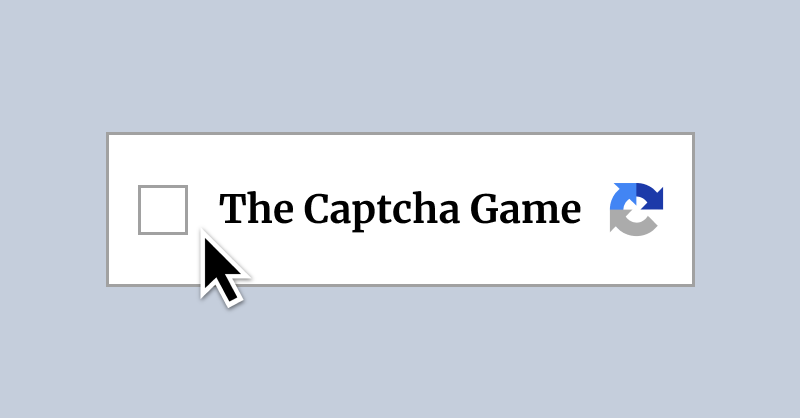Advertisement Space
Domino logic with crisp daily challenges
Advertisement Space
Keep exploring
Keep the momentum going with more arena racers, action trials, and puzzle standouts.

Test Your Strategy in Thorn And Balloons

Dive into the Ultimate Monster Battle Arena!

Master Geometry Arrow: A Geometric Adventure Awaits!

Tap, jump, and outrun the desert in seconds

Punch your way up the corporate ladder

Drop In & Glide — No Downloads

Turn verification into a score chase

Wheelie Life Honda Odyssey – Minivan Stunt Simulator

Play Escape Road Online and Outrun the City Police

Play Escape Road 2 – Drive, Smash, and Escape the City
Master the rhythm of numbered edges and paired pips
Make every dot count in a clean, satisfying logic flow
Pips NYT turns a simple set of domino tiles into a sleek, modern deduction exercise that rewards patience, pattern awareness, and clear thinking. Instead of placing random pieces and hoping for luck, you will read the strip of numeric hints around the grid’s border and determine exactly how many pip halves must appear within each row, column, or boxed region. The elegance of Pips NYT lies in pairing every dot with an exact partner, so nothing is wasted and no tile sits where it cannot logically belong. The more time you invest in learning how the constraints interact, the faster you’ll notice forced placements and cascading breakthroughs that resolve entire sections at once. Whether you are a veteran of pencil puzzles or a newcomer searching for a calm daily ritual, Pips NYT offers a balanced challenge that scales from gentle warm-ups to brain-teasing layouts.
Understand the core loop without friction
At first glance, Pips NYT presents a blank grid framed by small numbers. Those numbers are not decoration; they are your roadmap. Each digit tells you how many pip halves should live along that line or inside that region when the puzzle is solved. Because every placed domino contributes exactly two halves, every decision you make with Pips NYT can be checked against a running tally. Place a tile that overshoots a requirement and you will create an immediate contradiction; hold back too much and you’ll struggle to complete the quota. The trick is to alternate between macro and micro views: zoom out to verify quotas, then zoom in to decide where a single tile must fit. With Pips NYT, you develop a rhythm—observe, hypothesize, pencil, confirm—that feels both deliberate and fast once you grasp the flow.
Start from extremes to accelerate progress
When facing a new grid in Pips NYT, begin with the obvious boundaries. Rows or regions marked with zero pip halves eliminate entire swaths instantly, turning them into safe walls that other tiles cannot cross. On the other side, a maximum count acts like a magnet, revealing where dominoes must cluster to satisfy the quota. This contrast creates anchor points, and Pips NYT rewards this approach by unlocking chains of deduction. A forced tile here reduces options there; a confirmed absence in one corner ensures a presence in another. Over time you will learn to spot these extremes in Pips NYT almost subconsciously, shaving minutes off your solve.
Let adjacency rules narrow the field
Because every pip in Pips NYT must marry a matching half, adjacency is more than a spatial constraint—it is a logical contract. Once a tile occupies a space, certain neighbors become impossible. This is especially true near tight corridors where a single orientation could block quota fulfillment. Treat each placed piece in Pips NYT as a message: if this tile is settled, what must be true about the squares it touches? When you constantly ask this question, you transform local decisions into global clarity. The board begins to talk back, and Pips NYT becomes less about guesswork and more about listening carefully to what the numbers imply.
Track counts like a running balance sheet
A reliable habit in Pips NYT is maintaining a live count of remaining pip halves for the lines and regions you are influencing. Every time you add a tile, update the margin in your head or on paper. This financial-style accounting approach prevents you from painting yourself into a corner. If the math for a zone in Pips NYT does not reconcile, you know the recent move caused the issue. Undo, rethink, and correct before the error propagates. Practiced solvers treat quota checks like breathing: constant, automatic, and stabilizing.
Use pencil marks to protect momentum
Even the sharpest deduction chain may branch into two plausible options. Pips NYT handles this gracefully by rewarding careful notation. Pencil candidate spots lightly, leave alternative orientations visible, and move on. As you continue solving other parts of Pips NYT, contradictions will surface and wipe away bad branches, leaving only the valid placements. This keeps you moving without committing too early, which is crucial in larger or trickier daily boards. Over time, your penciling in Pips NYT will become cleaner, and you’ll need it less because your intuition will narrow choices faster.
A daily ritual that fits your schedule
The design of Pips NYT encourages just-one-more-move sessions. You can tackle a small section during a break, return later, and immediately see where to continue thanks to clear numeric cues and consistent logic. Many players use Pips NYT as a morning jumpstart, while others prefer an evening unwind. The board does not demand speed; it rewards clarity. That makes Pips NYT a welcome complement to quick word games or longer brainteasers, occupying a sweet spot of focus without pressure. If you like incremental mastery and clean wins, this routine will feel natural.
Common mistakes and how to avoid them
New solvers sometimes treat the puzzle like free-form placement, but Pips NYT is stricter. Do not ignore counts until the end; balances must guide every decision. Another frequent error in Pips NYT is forgetting that a tile’s shape and orientation affect multiple quotas simultaneously. When you place a domino, it contributes to both the squares it occupies and the lines it intersects. Always validate on both axes. Finally, do not be shy about undoing steps in Pips NYT. Reversal is not failure—it is a standard tool for pruning faulty branches.
Strategies that scale to harder boards
As you graduate to more advanced layouts, layer techniques. Combine extreme-value scanning with adjacency locks, then overlay quota checks to catch miscounts early. In dense corners of Pips NYT, mark forbidden squares rather than only possible ones; removing illegal options often reveals the only legal orientation. In symmetrical areas, consider the puzzle’s balance—Pips NYT designers often hide mirrored logic that yields paired placements. And when progress stalls, change perspective: rotate your mental view, sweep from bottom to top instead of left to right, and let fresh lines in Pips NYT reset your attention.
Why this puzzle feels uniquely tactile
Although it runs in a browser, Pips NYT delivers a satisfying tactile illusion. Matching dots to form complete tiles evokes the feel of real dominoes clicking together. That sensory echo, combined with crisp constraints, makes Pips NYT both soothing and stimulating. The interface lowers friction, while the rules elevate thought. The result is a puzzle you can savor in short bursts or sink into for a longer session without fatigue.
Who will enjoy it most
If you like Sudoku’s logic but want a different flavor, Pips NYT offers fresh terrain. If you enjoy nonograms, you will appreciate the quota-driven reasoning. If you prefer word games, the tidy daily cadence of Pips NYT will feel familiar while engaging a new part of your brain. Teachers and parents also find Pips NYT useful for building systematic reasoning skills: it trains counting, spatial planning, and cause-and-effect thinking in a playful wrapper.
Tips to finish with confidence
Keep your board neat; clarity accelerates deduction. Re-scan quotas after every cluster of moves in Pips NYT; small mismatches are early warning signs. Don’t chase a single stubborn area—pivot to another region and return later with fresh insight. When the puzzle is nearly complete, slow down. The last few dominoes in Pips NYT often interlock tightly; one hasty placement can unravel a perfect run. With practice, you’ll close puzzles cleanly and consistently.
Why it belongs in your daily stack
In a crowded field of logic diversions, Pips NYT stands out for balance. It is approachable yet deep, calm yet engaging, minimal yet expressive. Each puzzle renews the pleasure of precise thinking: you listen to the constraints, you act, the board confirms or rejects, and your understanding expands. Make Pips NYT part of your routine and you will build a reliable habit of clear, methodical reasoning that carries into your day. The satisfaction of seeing the final quotas align and every pip neatly paired never gets old—and tomorrow’s clean grid in Pips NYT will be waiting for you.
Domino logic with crisp daily challenges is ready to play
Build valid domino pairs on a gridded board, satisfy numbered edge hints, and tackle a fresh daily Pips NYT challenge that sharpens logic fast.
Share Domino logic with crisp daily challenges
Spread the word, invite friends, or bookmark this page to revisit the story whenever you need it.